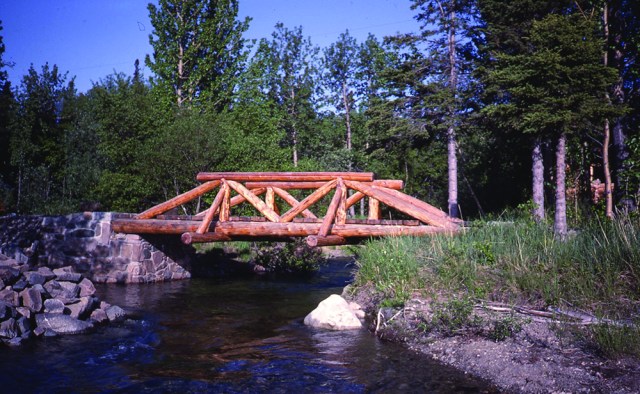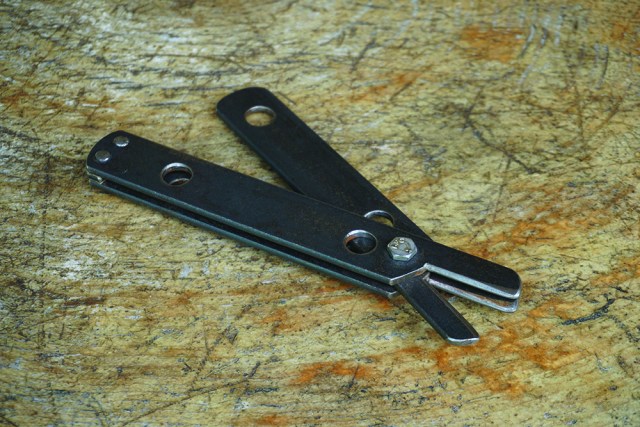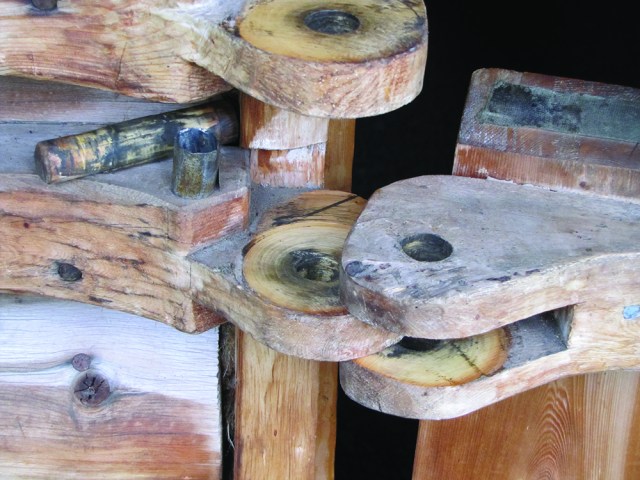
Editor’s note: In January we announced a new book about Dick Proenneke. Here, author Monroe Robinson shares how building furniture with his father, counting sockeye salmon in Alaska and a bridge led he and his wife to be caretakers of Dick Proenneke’s cabin. There is no one more qualified to write this particular book, given the years Monroe has spent in the restoration of Dick Proenneke’s cabin and the replication of his tools, and we are thrilled to include Monroe in our roster of authors. — Kara Gebhart Uhl
Spending 19 summers volunteering at Dick Proenneke’s cabin and then writing “The Handcrafted Life of Dick Proenneke” has its unlikely origin in the southern Arizona of my childhood. In this desert landscape I learned about wood as I helped my father construct a dozen pieces of our household furniture from aromatic cedar, but what I remember from those times was fear of criticism. This fear drove me to work hard and always to the best of my ability. The desert also provided the awe I felt and still feel from every wild creature I encountered traveling the desert by foot. I used leftover cedar boards to stretch more than a few rattlesnake skins to make wall plaques to sell to tourists. Today, protecting wild creatures and wild lands is deeply woven into my life and everything I make. It is not surprising I became someone inspired by the life of Dick Proenneke.
The dream of watching tens of thousands of caribou drew me north in 1965 at the age of 19. By chance that first summer working for the Alaska Department of Fish and Game, I helped count 24 million sockeye salmon returning to spawn in the headwater of the Kvichak River watershed borders Twin Lakes where Dick Proenneke would build his cabin three years later. This is a wild and magical corner of Alaska and, just like with Proenneke, it has held a part of my soul since that first summer.
In 1979, my first log construction was a trussed log bridge only 30 miles from Proenneke’s cabin. The many years of striving to do my best work had transformed from the fear of my childhood to the reward of constructing this bridge where no space between logs would accept a credit card. I had to plan this project well for I was working more than a 100 miles from the nearest store and there would be no provisions beyond what I initially flew in. (See Fine Woodworking magazine issue No. 33.)
In 1981, Dick Proenneke hiked the 30 miles to the homestead where I had constructed the bridge and said to the owner the bridge was the most beautiful log work he had seen. This was how I first heard of Dick Proenneke and the life he was living at Twin Lakes. IN 1982, I hiked 65 miles through the wilderness to meet Dick Proenneke. We corresponded until Dick departed Twin Lakes in 2000 when the the National Park Service (NPS) invited me to consult on what should happen to Dick’s cabin. Arriving at Twin Lakes, I met K. Schubeck who later became my wife. The two of us have been caring for Dick’s cabin as volunteers and meeting visitors every summer since. I have been involved in all the restoration of Dick’s cabin and replicated most of his handcraft as his restored originals were flown to the NPS archives. At Twin Lakes doing my very best work is expressed in replicating the detail of Dick’s handcraft. I want future visitors to imagine Dick’s hands polishing the patina on the replicated objects.


Many visitors to Twin Lakes every summer have memorized sections of Dick’s published journal entries. Many have an insatiable appetite for Dick’s handcraft and have contributed to my understanding of Dick’s work. It is now a responsibility to share my knowledge of Dick Proenneke’s handcrafted life, his tools, his handcrafted items and how he used and repaired those objects. The book is a glimpse into a life lived with purpose, a life Dick shared with the hundreds who received his detailed and outward-looking correspondences.

Dick Proenneke’s cabin can be a very busy place sometimes, making it difficult to provide a complete tour to every visitor even with two of us being present. People arrive by float plane as early as 8 a.m. and as late as 10 p.m. seven days a week.
Occasionally three, four or even five floatplanes will be there at the same time. It is sometimes exhausting but always a privilege. The future is moving away from our volunteer service toward using uniformed seasonal rangers as tour guides with the maintenance and care done by NPS staff flown in. A portion of the money from the sale of “The Handcrafted Life of Dick Proenneke” will be donated to an endowment account K. and I helped set up. This account will assist the National Park Service’s care for Dick’s cabin and help maintain the wilderness character of Twin Lakes.
— Monroe Robinson